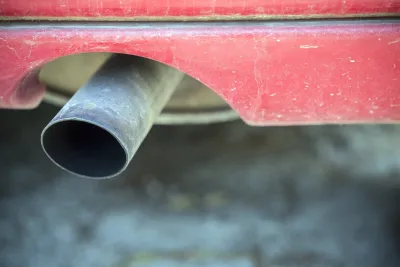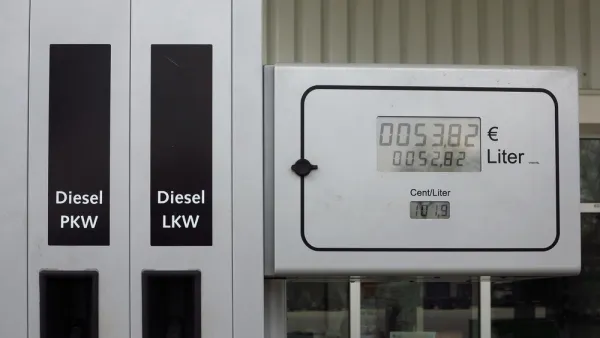While the study stems from research that found Volkswagen diesel cars had used 'defeat devices' to pass emissions tests, the new study points to inadequacies in the tests themselves, resulting in 50 percent higher pollution than testing permits.

The researchers, including those from the International Council on Clean Transportation (ICCT) who helped discover Volkswagen's deliberate cheating in testing, use the term "excess diesel vehicle NOx [nitrogen oxides] emissions", referring to emissions above those permitted in testing.
"Both light-duty and heavy-duty diesel vehicles emit more NOx in on-road driving conditions than during laboratory certification testing, for reasons that may range from details of the engine calibration to equipment failure, inadequate maintenance, tampering by vehicle owners, the deliberate use of defeat devices, or simply deficient certification test procedures," according to ICCT.
NOx is a key contributor to outdoor air pollution in the forms of ground-level ozone and secondary fine particulate matter (PM2.5). Long-term exposure to these pollutants is linked to a range of adverse health outcomes, including disability and years of life lost due to stroke, ischemic heart disease, chronic obstructive pulmonary disease, and lung cancer—particularly in sensitive populations such as the elderly, who are at higher risk of chronic disease.
Deaths from excess NOx emission were responsible for as much as 35 percent of total premature deaths attributable to diesel emissions from cars, trucks and buses in 2015. The focus of the study is on these 38,000 deaths rather than the majority of deaths resulting from allowable diesel emissions from these sources.
Only in Europe, where most cars are diesels, did deaths from diesel cars surpass those from diesel trucks and buses.
This chart shows total global deaths (107,626) by region resulting from on-road diesel emissions in 2015, and the share of those deaths from:
- NOx within regulated limits: responsible for 58 percent to 84 percent of deaths depending on region.
- Excess NOx from trucks and buses
- Excess NOx from cars and vans
In the U.S., where vehicle emissions testing is rigorous, three percent of deaths resulted from excess emissions from cars and light trucks; 34 percent from excess emissions from heavy trucks and buses, and 63 percent from allowable emissions.
Reporting for the University of Colorado newspaper, CU Boulder Today, Lisa Marshall writes:
“A lot of attention has been paid to defeat devices, but our work emphasizes the existence of a much larger problem,” said Daven Henze, an associate professor of mechanical engineering at CU Boulder who, along with postdoctoral researcher Forrest Lacey, contributed to the study. “It shows that in addition to tightening emissions standards, we need to be attaining the standards that already exist in real-world driving conditions.”
Seth Borenstein, science writer for The Associated Press, wrote about the study for newspapers throughout the U.S. His report for the Los Angeles Daily News, with contributions from Daily News staff writers, includes consequences resulting from the exemption for eligible diesel trucks from the California Air Resources Board Truck and Bus Rule needed for the passage on April 6 of a transportation funding bill that included fuel tax hikes.
The study was published online May 15 in the journal Nature [pdf]. It was led by the International Council on Clean Transportation and Environmental Health Analytics, LLC., in collaboration with the University of Colorado, Stockholm Environment Institute, and the International Institute for Applied Systems Analysis.
On YouTube: Video interview with three of the paper's authors: Susan Anenberg, Ray Minjares, and Joshua Miller.
FULL STORY: 38,000 people a year die early because of diesel emissions testing failures

National Parks Layoffs Will Cause Communities to Lose Billions
Thousands of essential park workers were laid off this week, just before the busy spring break season.

Retro-silient?: America’s First “Eco-burb,” The Woodlands Turns 50
A master-planned community north of Houston offers lessons on green infrastructure and resilient design, but falls short of its founder’s lofty affordability and walkability goals.

Delivering for America Plan Will Downgrade Mail Service in at Least 49.5 Percent of Zip Codes
Republican and Democrat lawmakers criticize the plan for its disproportionate negative impact on rural communities.

Test News Post 1
This is a summary

Test News Headline 46
Test for the image on the front page.

Balancing Bombs and Butterflies: How the National Guard Protects a Rare Species
The National Guard at Fort Indiantown Gap uses GIS technology and land management strategies to balance military training with conservation efforts, ensuring the survival of the rare eastern regal fritillary butterfly.
Urban Design for Planners 1: Software Tools
This six-course series explores essential urban design concepts using open source software and equips planners with the tools they need to participate fully in the urban design process.
Planning for Universal Design
Learn the tools for implementing Universal Design in planning regulations.
EMC Planning Group, Inc.
Planetizen
Planetizen
Mpact (formerly Rail~Volution)
Great Falls Development Authority, Inc.
HUDs Office of Policy Development and Research
NYU Wagner Graduate School of Public Service





























